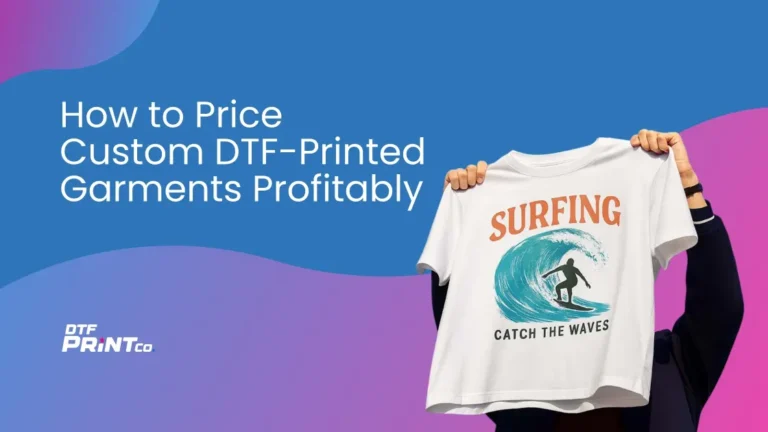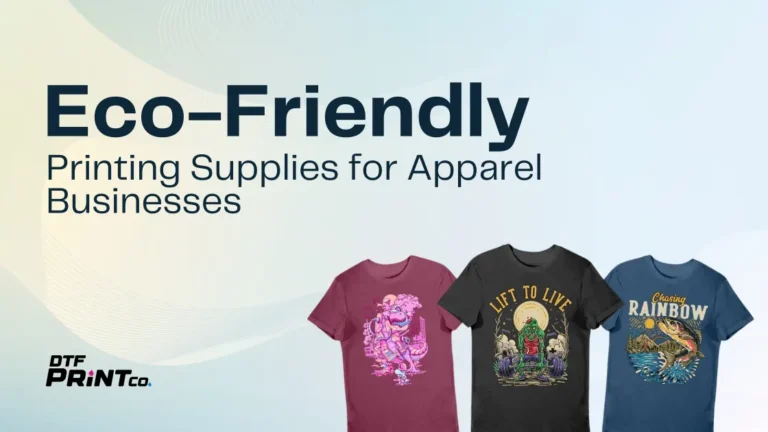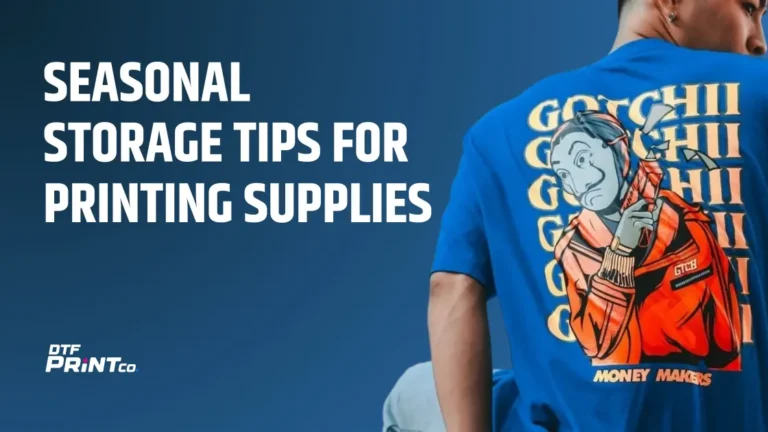If you’re looking to start or grow a custom apparel business, you’ve probably heard about DTF film and sublimation printing. These are two of the hottest methods for transferring designs onto fabrics and other products. But how do you know which one is better for your needs?
In this guide, we’ll break down DTF film vs sublimation in simple terms. You’ll learn:
- How each technology works
- What equipment and materials you need
- Differences in costs, quality, and durability
- Which method works best on different types of fabrics
- Important business factors like scalability and profit margins
By the end, you’ll have a clear picture of which printing method might be the right fit for you.
Why It Matters: Choosing the Right Print Method
Choosing the wrong print method can waste time, money, and customer trust. If you print on cotton shirts with the wrong technology, your designs might fade or crack after a few washes. Or you might end up with higher costs that cut into your profits.
That’s why understanding the key differences between DTF and sublimation is crucial. Each method has unique strengths and limitations. Knowing these will help you deliver top-quality products that keep customers coming back.
Key Definitions
Before diving deeper, let’s quickly define these two popular printing methods:
- DTF Film (Direct to Film):
This process involves printing your design onto a special PET film using DTF inks, applying a powder adhesive, and then heat pressing it onto fabric. DTF can print on cotton, polyester, blends, and even dark fabrics.
- Sublimation Printing:
Sublimation uses special sublimation inks that turn into gas when heated. The gas bonds directly with polyester fibers, embedding the design into the material. It works best on white or light-colored polyester and polyester-coated items.
In short:
- DTF = more versatile on fabric types and colors.
- Sublimation = best for high-detail prints on light polyester.
Technology and Materials Used
Understanding how each printing method works will help you see why DTF film and sublimation printing are suited for different needs. Let’s explore the inks, transfer processes, and equipment involved.
Inks: DTF vs Sublimation
- DTF inks are specialized water-based pigment inks. They’re designed to sit on top of the fabric after being bonded by adhesive powder. These inks work on cotton, polyester, blends, and even leather or nylon, making them highly versatile.
- Sublimation inks are dye-based and designed to chemically bond with polyester molecules. When heated, they turn into a gas that embeds into the fibers. This means the print becomes part of the fabric, rather than sitting on top. That’s why sublimation prints feel super smooth and don’t peel or crack.
Transfer Methods: How Designs Get onto the Fabric
DTF Transfer
- Print your design onto a clear PET film using DTF inks.
- Sprinkle a special thermoplastic powder adhesive over the wet ink.
- Cure the powder using a heat press or curing oven (usually at about 160°C for a few minutes).
- Position the film on your garment and heat press it to transfer the design.
- Peel off the film once cool, leaving your vibrant design on the fabric.
Sublimation Transfer
- Print your design on sublimation transfer paper using sublimation inks.
- Place the printed paper on your polyester item.
- Use a heat press to apply high temperature (around 200°C) and pressure.
- The ink turns into gas and permanently bonds with the fibers.
- Remove the paper — no residue left, just pure color embedded in the fabric.
Equipment You’ll Need
For DTF Printing
- A DTF printer, which is similar to a modified inkjet printer with special DTF inks
- PET transfer films
- Hot melt powder adhesive
- Heat press machine for final transfer (and optionally a curing oven or a second press for powder bonding)
- Basic software for print layouts (often included with your printer)
For Sublimation Printing
- A sublimation printer with sublimation inks (many use Epson EcoTanks converted for sublimation)
- Sublimation transfer paper
- Heat press machine
- Polyester or polyester-coated products
Quick Recap: Key Differences in Technology
| Feature |
DTF Film |
Sublimation |
| Inks |
Pigment-based for surface prints |
Dye-based for fiber embedding |
| Transfer |
Film + adhesive + heat press |
Paper + heat turns ink into gas |
| Equipment |
DTF printer + powder station |
Sublimation printer + paper |
| Fabric types |
Cotton, blends, darks, poly, more |
Light polyester or coated items |
Because of these technology differences, DTF is generally chosen for printing on cotton shirts, hoodies, and dark fabrics, while sublimation shines for athletic gear, poly shirts, mugs, and photo panels.
Cost Comparison: Startup and Ongoing Expenses
When deciding between DTF film vs sublimation, cost is often a deciding factor. Here’s how these two methods stack up.
Startup Costs
- DTF printing setup is typically more expensive. A small DTF printer bundle (printer, shaker, curing oven) starts around $3,000 to $5,000, though desktop entry models can be cheaper. You’ll also need hot melt powder, PET films, and specialized inks.
- Sublimation printing setup is often cheaper to start. Many small businesses begin with a converted Epson EcoTank printer for $300–$500, plus a heat press for around $300–$600. The total can be under $1,000, making it popular for beginners.
Cost Per Print
| Metric |
DTF |
Sublimation |
| Transfer supplies |
Film + powder + ink (~$0.60–$1/shirt) |
Paper + ink (~$0.20–$0.40/shirt) |
| Pre-treatment needed? |
No |
No (but must be polyester) |
| General rule |
Slightly higher per print |
Lowest per print if poly |
While sublimation prints cost less in consumables, they’re restricted to polyester and light colors, which can limit sales. With DTF, you pay a bit more but can print on any fabric, opening up wider markets.
Quality, Durability, and Customer Expectations
Wash Tests and Longevity
- DTF prints create a flexible layer on top of the garment. With quality inks and proper pressing, they last 30–50 washes before you see noticeable fading or cracking. They’re comparable to screen prints.
- Sublimation prints actually dye the fabric fibers. This means they’re virtually permanent — they won’t peel, fade, or crack, often outlasting the garment itself.
Feel and Wear
- DTF prints have a light “hand feel,” meaning you can feel the design on the shirt. Some customers like this raised texture, others prefer a smoother finish.
- Sublimation prints are completely embedded, so the fabric feels exactly the same as unprinted areas — lightweight and breathable.
Business Considerations: Versatility, Scalability, and Profit Margins
Fabric Compatibility Means More Sales
- DTF film printing allows you to serve markets needing cotton tees, black shirts, canvas bags, denim jackets, even leather patches — vastly broadening your product catalog.
- Sublimation printing is limited to white or light-colored polyester (or coated hard goods), perfect for sports apparel, mugs, and signage, but not everyday cotton shirts.
Scalability and Automation
- DTF setups with shakers and ovens can handle hundreds of transfers per hour, great for scaling. Many shops make transfers in bulk and press them on-demand.
- Sublimation is slightly slower for apparel since each piece needs direct heat pressing. For mugs or photo panels, it’s very efficient, especially with multiple heat presses.
Profit Margins
Both methods offer solid profit margins, typically 50–70% markup, depending on your market. The difference is mainly in your product mix:
- Use DTF to offer popular cotton tees, sweatshirts, and custom small-batch prints.
- Use sublimation for poly jerseys, promotional items, and vibrant all-over prints that customers will pay a premium for.
Conclusion: Which Should You Choose — DTF or Sublimation?
So after all this, you might be wondering: Which is better, DTF or sublimation? The truth is, there’s no universal winner — it comes down to what you want to print, who your customers are, and how you want to grow your business.
Here’s a simple way to look at it:
| Choose DTF if… |
Choose Sublimation if… |
| You want to print on cotton & blends |
You’re focused on polyester apparel or hard goods |
| You need to print on dark fabrics |
You want photo-quality colors that embed into the fabric |
| You want one printer for many fabrics |
You specialize in sportswear, mugs, signs |
| You like a slightly raised print feel |
You want zero hand feel — ultra smooth |
| You plan to expand into small batch orders & transfers |
You’re okay with light-color restrictions |
Ready to Get Started?
Ultimately, your choice depends on your goals. Many successful print shops actually use both methods, letting them cover everything from cotton t-shirts to polyester sports jerseys and custom mugs.
Looking for step-by-step setup guides?
Check out our detailed walkthroughs on:
These guides break down everything — from choosing equipment to your first test print — so you can launch your business with confidence.






